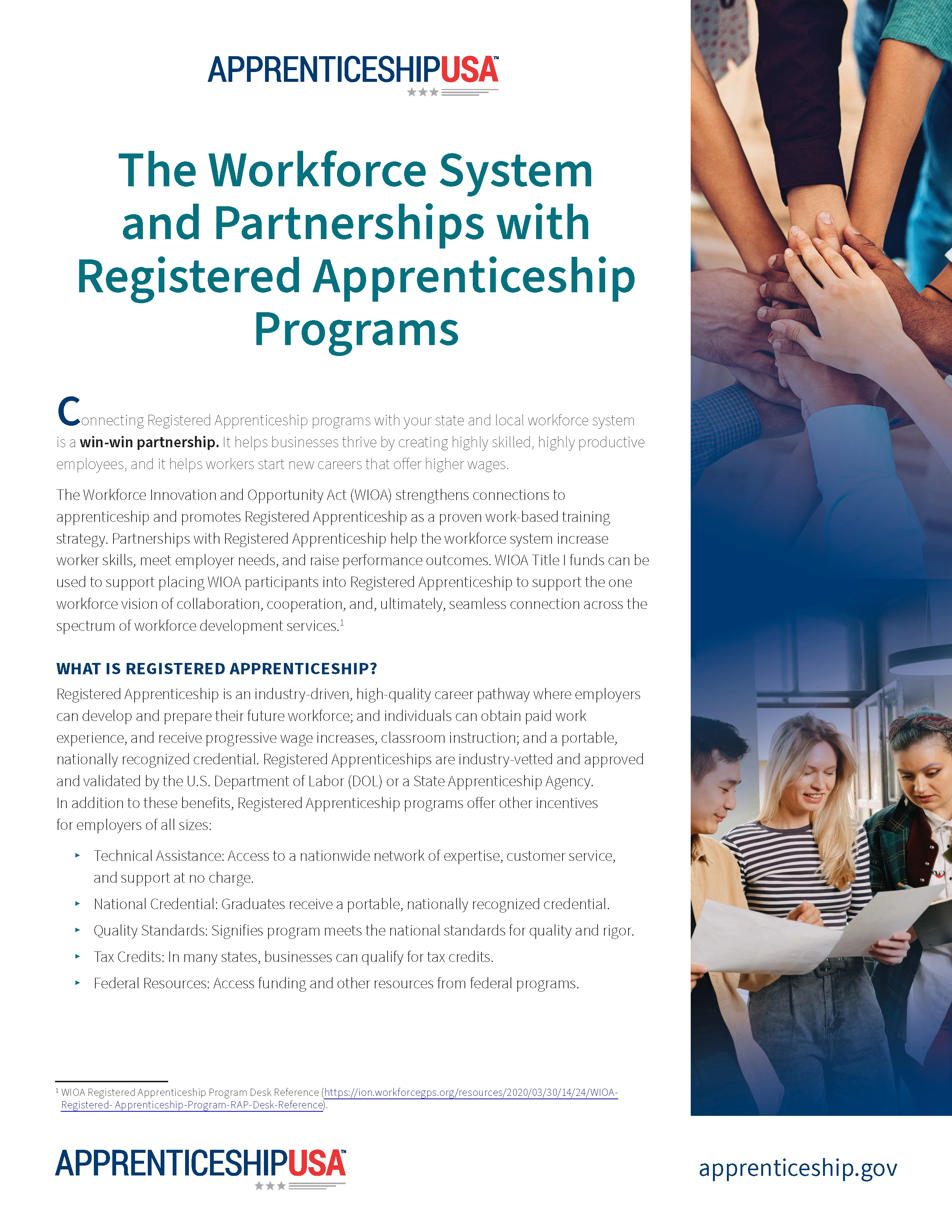Registered Apprenticeship

An Intentional Workforce Development Strategy for the Forestry Industry
A Registered Apprenticeship Program (RAP) is an on-the-job training program that includes an element of classroom or online education. RAPs are typically developed by an employer or an employer association (also referred to as the program sponsor) and are registered with the U.S. Department of Labor (USDOL) or a USDOL-recognized state agency.
Some states offer incentives to registered apprenticeship program sponsors. Incentives are often in the form of employer tax credits or training grants. Additionally, apprentice training can often be supported by local Workforce Investment Opportunity Act (WIOA) funding, and this resource can sometimes offer employers partial wage reimbursements as well.
A RAP consists of registered program standards that include details on program administration, apprentice and program responsibilities, an apprentice selection process, a schedule of related job skills, an outline of related courses, and a progressive wage scale for which an apprentice is expected to climb, having met outlined term and phase requirements.
During the term of apprenticeship, apprentice wages can start lower, but not below the state’s minimum wage. The employer is responsible for increasing apprentice wages as skills are mastered by the apprentice, according to the program sponsor’s pre-determined wage scale.
The employer or sponsor must also ensure the apprentice attends job-related classes offered by a local college, an online training provider, the employer, or a combination of these options. Career-applicable courses are determined by the program sponsor during the program development stage, along with how the courses will be covered and whether the apprentice will be paid wages while attending classes. Litmus tests and/or competency-related exams can also be implemented into the program to ensure apprentices are acquiring career-related skills and increasing their job knowledge.
Apprenticeships in forestry careers can take 2 to 4 years, depending on the occupation. To ensure skills are being mastered, employers track apprentice on-the-job learning progress and verify with supervisors, journeypersons, and mentors that the apprentice is coming along and where he/she could use additional support. Refer to the table below for apprenticeship program term lengths for some common forestry occupations, and click on the occupation code link to learn the industry vetted skills and work activities used in the development of RAP standards.
| Occupation Code | Occupation Title | Apprenticeship Term |
| 37-3013.00 | Arborist | 2 years |
| 45-4021.00 | Faller/Logger | 2 years |
| 33-2022.00 | Fire Operations Forester | 1 year |
| 19-4071.00 | Forest and Conservation Technician | 1 year |
| 47-2073.00 | Elevating Grader Operator | 2 years |
| 45-4023.00 | Log Grader/Scaler | 1 year |
| 49-3042.00 | Logging Equipment Mechanic | 4 years |
| 45-4022.00 | Logging Equipment Operator | 2 years |
| 49-9096.00 | Rigger | 3 years |
| 37-3013.00 | Tree Climber/Trimmer | 2 years |
| 37-3013.00 | Tree Surgeon | 3 years |
Starting apprentices in forestry-skilled trades requires commitment from both the apprentice and the employer. The apprentice’s goal is to become a fully trained tradesperson to then pour back into his/her employer the skills learned both in school and on the job. Apprentices are mentored not only in the requirements of the job, but also in the industry, company culture, and work ethic. The employer commits to training the apprentice until he/she become fully qualified in the career occupation. Once an apprentice has completed their program, program sponsors award them a USDOL journeyperson certificate.
For more information on registered apprenticeships, USDOL’s Apprenticeship.gov website has unlimited resources. Employers seeking to learn more can use the Express Interest Form on USDOL’s Apprenticeship.gov. To get started on the development of RAP standards, it is recommended to start with initiating program standards within the Standards Builder Tool at Apprenticeship.gov/StandardsBuilder and await assignment of your case to an apprenticeship representative.
Potential program sponsors can also reach out to a state or regional field office for guidance. The regional office map is found at Regional Offices | Apprenticeship.gov, and the state directory is located at State Offices | Apprenticeship.gov; both web pages provide direct contact information to regional and state directors across the nationwide apprenticeship system.
The USDOL Office of Apprenticeship looks forward to helping grow the forestry workforce with registered apprenticeships.

